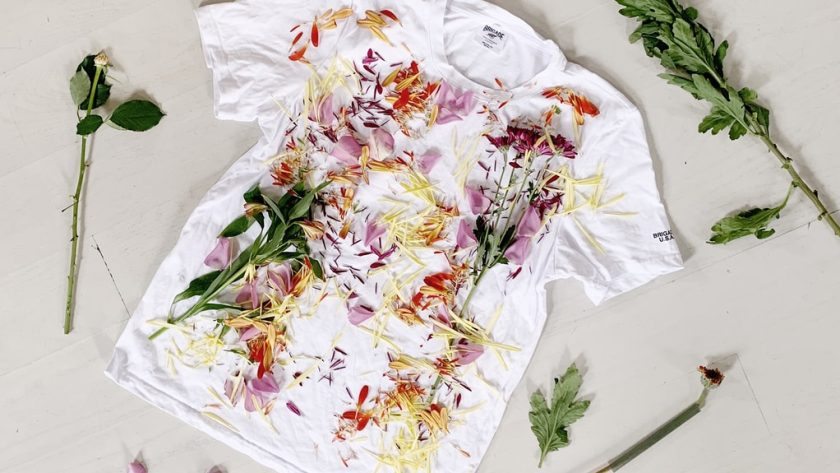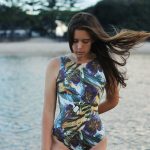Consumers are increasingly conscious of the importance sustainable production and seek out easy ways to shop that respect their eco-consciousness.
Independent online marketplaces provide a link between the growing digital landscape, the demand for sustainably manufactured goods, and a platform for brands looking to tell their stories. Each site serves a unique purpose and is always on the lookout to find new opportunities that help sustainably fashion.
We spoke to the CEOs of three e-commerce marketplaces, who shared their perspectives and selection process, as well as their values, with us.
Curated Crowd: Community builders
Ada Yi Zhao, Curated Crowd CEO, set out to create a digital platform that would allow designers to interact with consumers. It began as a crowdfunding platform for emerging designers. However, it soon evolved into an online marketplace for UK-based designers who didn’t fit the traditional fashion molds of ultra-luxury and fast fashion.
Curated Crowd was created in response to growing demand for mid-level fashion. It also looks further down the supply chain at individual designer who often have difficulty accessing international buyers directly. Emerging labels around the world can tell their stories and market their products through this constantly growing community.
Zhao develops relationships with designers through onboarding calls and visits to ateliers, based on an open application system. He learns about the history behind the label and what their future goals are. A small number of items make it to the market, and each item is either limited edition or custom-made to order to avoid mass-overproduction.
Zhao stated that the business side of sustainability is more important than material and its journey – from its conception through to the end consumer’s homes. “I always pay attention to the business practices of each designer. Is it sustainable for a business? Are the designers able to live a sustainable life? I’m against the fashion cycle. Every piece on our platform should be treasured for years.”
Designer relations are treated with care, and the company maintains a personal relationship with its customers. According to Zhao, 60 percent of orders are from returning customers. Zhao regularly communicates via WhatsApp and other social media platforms with them.
She said, “It is really curating that group. We are not for everyone. We are only for people who have an educated purpose. People visit us to learn about the brand, sustainability and how to maintain a wardrobe for future seasons. We target the conscious consumer.”
The online marketplace is accompanied by a pop-up shop in London. This store offers personal styling advice and collects valuable feedback from visitors. Curated Crowd could continue to develop this omnichannel model and bring this physical experience to the digital world.
Ada Zhao recently moved to Amsterdam. This new base offers many opportunities, including the possibility of a pop-up shop or the opportunity to assist European brands in their efforts to enter the UK.
“As a British Fashion Council member I see many talents in London, but it’s really difficult for them to have an voice here in continental Europe because of Brexit,” said Zhao. Zhao explained that they want to be the bridge between them.
She added: “Online, we are also looking at launching our US site to reach a wider audience. Although we ship internationally, we recognize that local curation is more important to our customers.”
Seezona: emerging designer hub
The Scandinavian luxury marketplace Seezona launched two years ago. It has since grown to be a multi-brand platform that offers everything, from accessories and high fashion to activewear and beachwear. Multi-brand store Seezona curates international brands from more than 25 countries. This allows for a unique selection that you won’t find on other sites.
Anna Helander, founder and CEO of Seezona, stated, “Through our technological platform, we facilitate interaction between small business and customers as well as taking care the entire value chain involved with those processes.”
She fell in love with the industry when she worked in concept shops in Southern France. There, she met new designers and was able to stand out from the crowd. Helander noticed certain obstacles that made it difficult for new brands reach consumers after she began to explore the sector.
She said, “I started to understand how heavily dependent the industry was on wholesale.” “The result is that many designers with great potential don’t scale up because they don’t have the connections or the ability to produce enough products. That was something I set out to solve and technology proved to be the best way to do it.”
Every brand featured on the platform has been through a rigorous selection process that involved meetings. The label was evaluated using a set of criteria. The stories and production processes of each founder allow for a deeper connection and help ensure that the brand is well-integrated into the Seezona platform.
Helander stated that she is always looking for brands that use high quality fabrics and have a local mindset in production. Helander also mentioned that he was looking for great designs.
The site offers a wide range of items, including bold statements pieces as well as more simple staples. It has something for everyone. A virtual styling room allows customers to try out outfits and products online before they buy.
Seezona is still relatively new on the scene, and is constantly looking for ways to grow and discover. Helander stated that there are many exciting projects in the future. Keep watching!
The Wearness: Clear conscious shopping
The Wearness, a German company, was founded by four women. Although it functions as a marketplace but doesn’t want its appearance to be a marketplace for brands, specially curated brands can have a home on a platform that takes into consideration eco and ethical production in many ways.
Julia Zirpel, one co-founder, stated that The Wearness was founded to demonstrate that sustainability does not have to impact the style and look of a piece. She also believes that it can be beautiful with a more sustainable production. “We wanted this to be a contradiction because sustainable products on the market five years ago were not trendy in our eyes.”
Site’s high-end pieces are chosen through a rigorous questionnaire process. This involves deep dives into each sector of sustainability. Each item can be viewed alongside its criteria, so buyers can shop according to their needs. These could include organic materials, fair production, and other specific areas of sustainability.
This setup allows shoppers to know exactly what they’re buying and also allows brands to be flexible in directing sustainability efforts towards different perspectives of the production process. Zirpel stated, “We write about the brand, we explain why they’re sustainable, and we also show where they might be not so sustainable yet,” highlighting the importance of transparency.
Handcrafted is an important aspect of our culture and something that isn’t so obvious with many people. This opens up the possibility of traditional heritage and indigenous production, as well local manufacturing,” Zirpel explained. “Lots and lots of women work in this field, and it’s another aspect of sustainability that people don’t know about.”
The Wearness also believes in female empowerment, which takes into account the hard work of women working in the fashion industry. The market aims to promote the rights of female workers by highlighting the importance of education, child care, and other resources that support and empower women.
The Wearness releases a limited edition collection every three months in addition to its constantly evolving portfolio of brands. This limited edition includes a shirt and a dress. Each product is unique and each concept is based on circularity and biodegradability. The Wearness sells circular wardrobes made from all-natural, locally-produced materials.
Zirpel addressed circular production. Everyone talks about recycled materials. But they don’t know what happens to products if they aren’t used anymore.
Zirpel says that lack of effective waste management is one reason Zirpel identified. She also noted that it was important to focus on stopping garment disposal from ending up in countries Europe can’t control anymore. The Wearness platform allows products to be returned once they are no longer in use. The company is also looking at the possibility of offering a repair service.
Guya Merkle, another cofounder and creative director at Vieri high-end jewellers, has made a significant contribution to the development of sustainable waste management. She founded an initiative to make recycled gold from used mobile phones that were transported from Africa back into Europe, in collaboration with a Dutch NGO.
Future plans include the creation of a physical location where customers can touch and see the clothes in person. This will allow for direct meeting with shoppers. Zirpel stated: “Especially during covid we feel that people want to have personal contact, and not just get everything online.”








